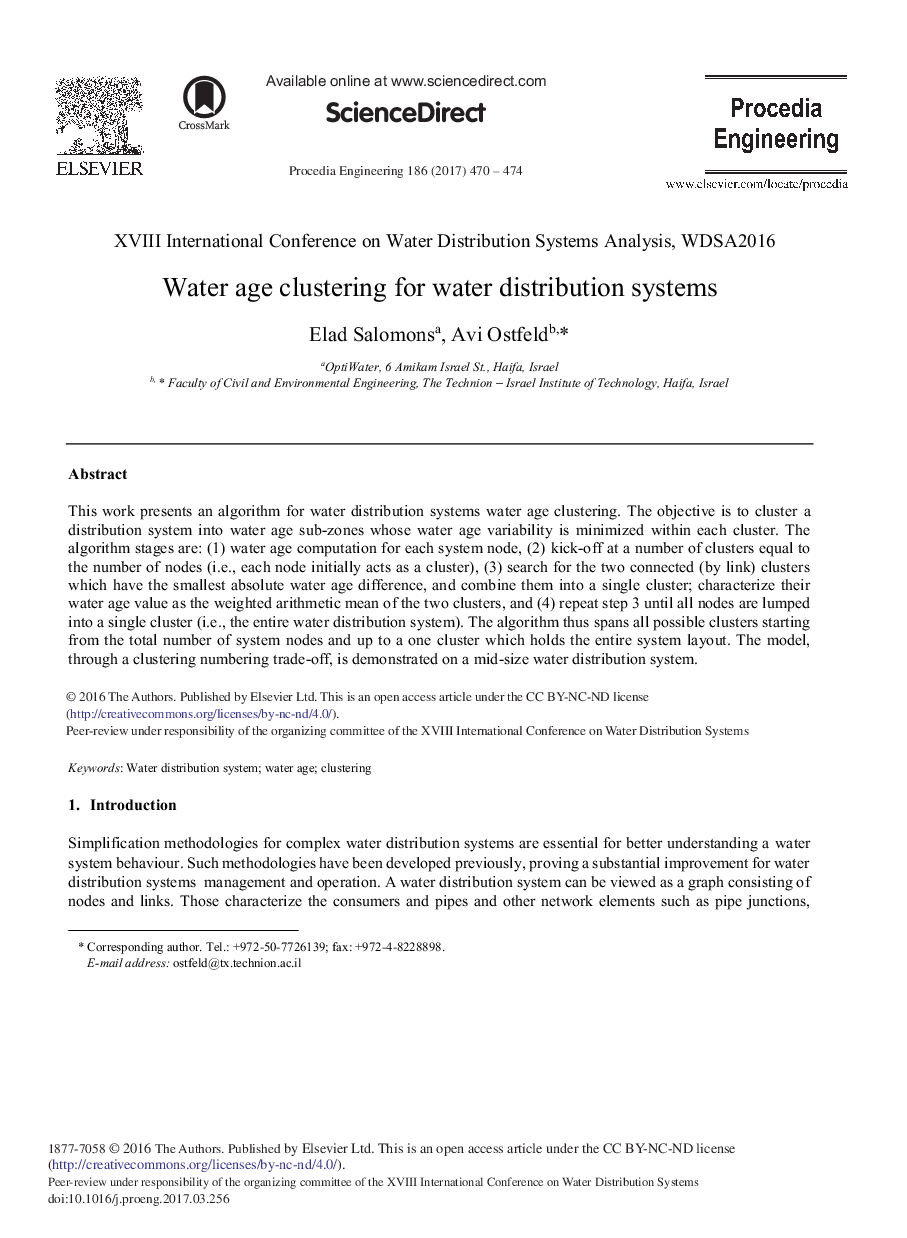ترجمه فارسی عنوان مقاله
خوشه آب سن برای سیستم های توزیع آب
عنوان انگلیسی
Water Age Clustering for Water Distribution Systems
| کد مقاله | سال انتشار | تعداد صفحات مقاله انگلیسی |
|---|---|---|
| 85752 | 2017 | 5 صفحه PDF |
منبع

Publisher : Elsevier - Science Direct (الزویر - ساینس دایرکت)
Journal : Procedia Engineering, Volume 186, 2017, Pages 470-474
ترجمه کلمات کلیدی
سیستم توزیع آب، سن آب خوشه بندی
کلمات کلیدی انگلیسی
Water distribution system; water age; clustering;
ترجمه چکیده
این کار الگوریتمی را برای سیستم های توزیع آب سیستم خوشه ای آب ارائه می دهد. هدف این است که یک سیستم توزیع را در زیر حوزه های سن اوج قرار دهیم که تغییرات سن آب در هر خوشه به حداقل می رسد. مراحل الگوریتم عبارتند از: (1) محاسبه سنی آب برای هر گره سیستم، (2) شروع در تعدادی از خوشه ها برابر تعداد گره (یعنی هر گره در ابتدا به عنوان یک خوشه عمل می کند)، (3) جستجو برای دو دسته (توسط لینک) خوشه هایی که دارای کوچکترین اختلاف سن آب مطلق هستند، و آنها را به یک خوشه ترکیبی؛ ارزش سن آب خود را به عنوان میانگین میانگین وزنی دو خوشه، و (4) تکرار مرحله 3 تا زمانی که تمام گره ها به یک خوشه واحد (یعنی کل سیستم توزیع آب) توزیع شود. بنابراین الگوریتم تمام خوشه های احتمالی را از مجموع تعداد گره های سیستم و به یک خوشه ای که کل طرح سیستم را نگه می دارد، تقسیم می کند. این مدل، از طریق تعدیل شماره خوشه بندی، بر روی یک سیستم توزیع آب به اندازه متوسط نمایش داده می شود.

